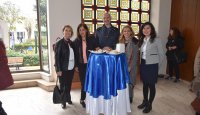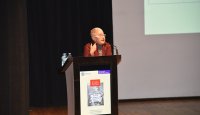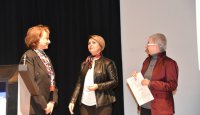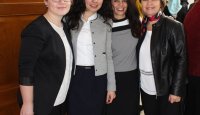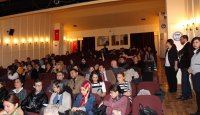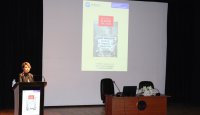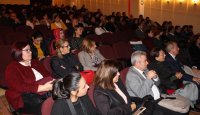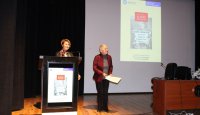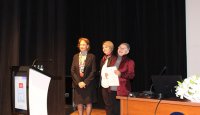Director of ESKAR Prof. Günay Yılmaz made an opening speech in the conference held by Meral Akkent in Goztepe Campus Dr. İbrahim Uzümcü Conference Hall. Prof. Günay Yılmaz mentioned respectively Women’s Culture Foundation Istanbul, Women’s Museum Istanbul and Meral Akkent in her speech. Yılmaz also mentioned that ESKAR was officially founded on July 21, 2016 and during foundation phase the symposium entitled “Toplumsal ve Cinsiyet Perspektifinden Kadını (Woman from the perspective of Society and Gender)” was held on March 8, 2016. Yılmaz added that ESKAR is working on an international refereed journal “Marmara Universitesi Kadın ve Toplumsal Cinsiyet Araştırmaları Dergisi (Marmara University Women’s Studies and Gender Studies Journal)” and a book sharing the same title as the symposium mentioned above is in the pipeline.
Yılmaz said that they aimed to create awareness on gender discrimination and works carried out by academicians in different disciplines and to share and produce knowledge providing to guide policies helping women to get over their problems under the same roof of ESKAR which was founded as an interdisciplinary organization with the purpose of carrying out Women’s and Gender Studies. Moreover, Yılmaz mentioned that with the aim of founding “Women’s Museum Istanbul”, Women’s Culture Foundation Istanbul was founded on March 8, 2011 and being the first women’s museum of Turkey, Women’s Museum Istanbul puts signature to very precious and significant works which bring women into view.
Meral Akkent addressed to such issues like the reasons for existence of women’s museums, various women’s museums around the world, historical process and aim of the women’s museums in her presentation.
Akkent also mentioned that only 4 paintings belong to woman artists among 2300 paintings in The National Gallery and although there are plenty of nude paintings of women in Louvre which is the most visited museum, there is no single painting created by women in the museum. She also mentioned such issues that “A museum must be in a building?”, “Is not possible to be a virtual museum?”, duty of women’s museums and whether or not the content of women’s museum should be perceived as feminist and political art gallery. Akkent also address to examples of other women’s museums around to world, their historical process of foundation and their theme.
